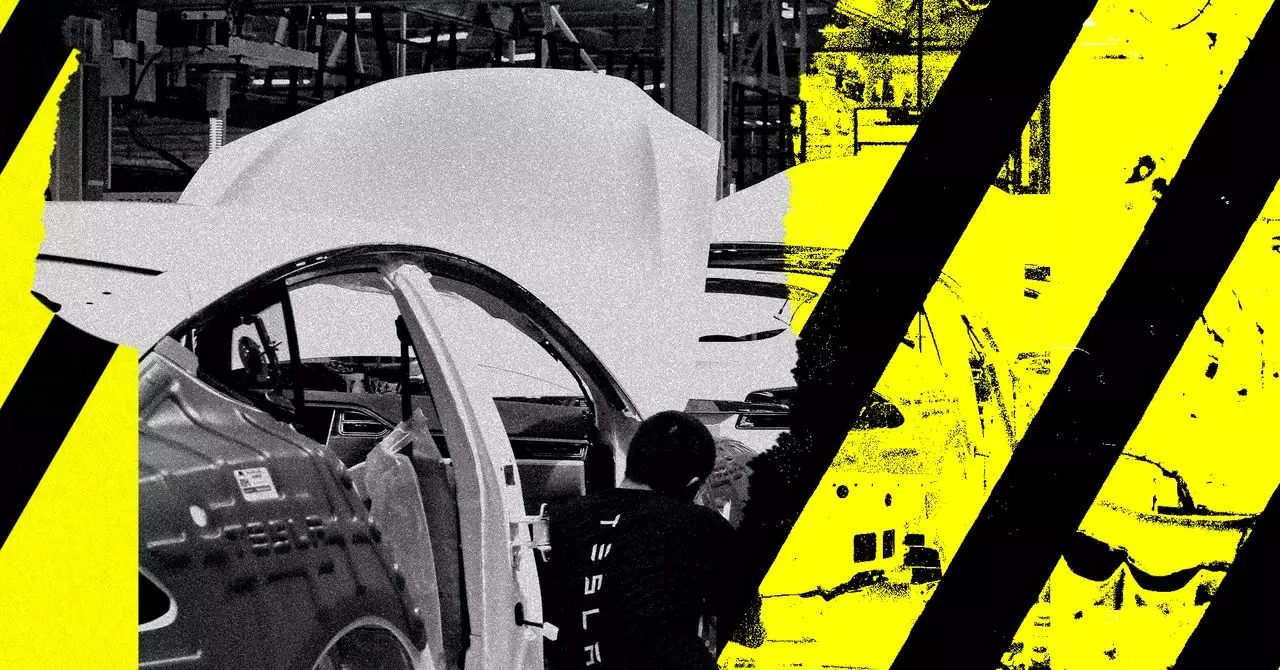Recent revelations from the AFL-CIO have cast a stark spotlight on the safety practices within some of the most innovative companies in the tech and engineering sectors—Tesla, SpaceX, and The Boring Company. A memo outlining a litany of accidents and potential safety hazards links over two dozen incidents since 2016 to these companies, raising alarms about the often perilous working conditions faced by employees. The implications of these findings could have far-reaching effects, not just for the workforce but for the reputation of companies that pride themselves on pushing technological boundaries.
One harrowing example comes from a tragic incident at Tesla’s Gigafactory in Austin, Texas, where a licensed electrician, Victor Joe Gomez Sr., lost his life due to an electrocution while inspecting electrical panels purportedly left energized. This incident is just the tip of the iceberg; OSHA’s ensuing investigation and ongoing disputes shed light on deeper issues that may undermine worker safety protocols. The recurring allegation that the company has not prioritized or adequately addressed safety concerns is troubling, especially in an era when workplace safety should be non-negotiable.
The Illusion of Accountability
Safety measures in workplaces are fundamentally about accountability, yet reports indicate a pattern of Tesla and its sister companies resisting this accountability. The AFL-CIO highlights that workers have expressed concerns indicating a chilling culture regarding safety practices at Tesla. The President of the AFL-CIO, Liz Shuler, encapsulates this sentiment by mentioning that many employees feel that their well-being is not a priority. This perception undermines morale and could lead to further safety infractions, creating a vicious cycle.
The Occupational Safety and Health Administration (OSHA) operates on the principle of compliance and cooperation. However, Tesla’s frequent disputes over citations rattle this notion. With 27 out of 46 citations remaining open due to ongoing disagreements between the company and OSHA, the environment for accountability appears on shaky ground. It suggests a corporate strategy aimed more at contesting fines than systematically reforming hazardous conditions that could easily be remedied. This obstinate approach raises the question: Are these companies prioritizing profits over people?
The Cost of Negligence
What is particularly concerning is the financial calculus that seems to drive decisions at these firms. David Michaels, a former OSHA assistant secretary, asserts that larger companies like Tesla may lack sufficient incentive to comply with safety regulations promptly. Their approach to challenge fines, often incurring greater legal costs and avoiding immediate remediation of hazards, skews the fundamental purpose of OSHA’s mandate–to ensure safe working conditions.
By engaging in prolonged disputes, these companies risk not only their financial health but also the welfare of their employees. The deceptive allure of cutting corners, particularly in incidents involving serious injuries, such as the case of a SpaceX employee who suffered a significant skull fracture due to malfunctioning machinery, highlights a grave oversight concerning worker safety. In such cases, it is not merely about complying with regulations; it is about human lives.
Whistleblower Dilemmas
The whistleblower landscape in these environments is another aspect worthy of examination. Although there is currently no evidence that individuals within these companies face direct retaliation from corporate higher-ups, the fear of exposure often complicates the decision to report and address safety issues. The anonymity protocols kept by OSHA, while intended to protect whistleblowers, may not suffice against the pervasive culture of intimidation often reported by employees.
In systems where safety should take precedence, an environment that discourages open dialogue can be detrimental. The protection of whistleblowers is paramount; if employees do not feel secure in reporting triaging concerns, how can a company ever hope to cultivate a genuinely safe workplace?
The Corporate Responsibility Imperative
Finally, as Tesla, SpaceX, and The Boring Company continue to assert their leadership in innovation and technology, there needs to be a concurrent commitment to safety as a core value within their operational ethos. Companies must recognize that ignoring safety issues not only endangers employees but ultimately undermines their own viability as forward-thinking organizations. It is not enough to be at the forefront of technological advancement; corporate responsibility must expand to encompass the health and safety of those who toil to bring those advancements to fruition.
As the discourse around safety in high-tech workplaces reverberates, the expectation is clear: innovative companies must aspire to meet not just technological benchmarks but also ethical standards for employee welfare and safety. Anything less may tarnish their legacies in more ways than one.

